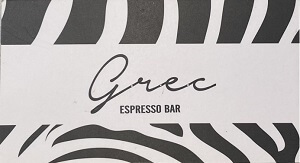Our experience of our surroundings and the environment we live in is as passive observers. Such an interaction limits the engagement and motivational potential to understand how specific interactions and behaviors may impact our everyday lives. Augmented Reality (AR) offers an interface between reality and perception, bridging the gap between the real and virtual worlds. It has been reported that AR experiences enable end-users to move from observation to immersion which is often associated with the encouragement they experience in the digitally enhanced setting (Dede, 2009). AR's immersive nature helps the audience see details, believe in actions, and connect events in a virtual story and their own lives. More specifically, location-aware AR applications have been argued to provide users with enriched and immersive experiences, which promote enjoyment, engagement, motivation, and even learning (e.g., Katika et al., 2022).
Gamification has been argued to improve user engagement as such design elements enhance the satisfaction of competence, autonomy, and relatedness (Bitrian et al., 2021). Rewards, badges, achievements, and leaderboards generate rewarding experiences that improve motivation and inspire responsibility. Virtual agents guiding end-users in various tasks contribute to a convenient user experience and boost motivation and productivity.
With high data availability and modern algorithms, AR applications enhanced with gamification elements contribute to the changing way end-users interact with their environment to obtain information, train, and socialize. Wide-spread access to portable devices with unique features, such as connectivity and location-awareness, provide powerful and ubiquitous, yet accessible and inexpensive, platforms for supporting such applications and enabling rich user experiences in various contexts (e.g., Radu, 2014, Permadi and Rafi, 2016).
In this study, we leverage the ability of mobile AR technology coupled with gamification design elements to engage end-users in an immersive environment. Given the deep penetration of mobile phones in daily lives, we developed a mobile AR application that offers unique user-environment interaction for education and training purposes. The AR application allows media visualizations, content manipulation, educational and gamification functionalities, and a virtual agent ensuring seamless interaction with the technology.
After gaming app User Interface (UI) research, the AR app visuals and UI elements (such as the self-explanatory icons, call-to-action-buttons, visual graphics, and leaderboard tables) were designed. As a result, a custom UI footage was built focusing on an immersive, usable, and familiar user interface environment with a low cognitive load process to improve user engagement and avoid common usability errors.
The content of the AR app selected and tested was addressed for training purposes in sustainable practices (i.e., circular economy, water management, etc.). Given its adaptable nature, it has a great potential to be applied in tourism and cultural appreciation, art, heritage promotion, etc.
The mobile AR application presented in this study supports triggered AR content in two ways: a marker-based function requiring a marker (QR) and the location-based AR functionality using the device’s GPS location as a trigger to pair dynamic location with Points of Interest to augment relevant content.
To validate our proposed design, a web survey and a field study were employed to assess several factors related to perceived usefulness, ease of use, enjoyment, and learning through the AR app. The aesthetic appeal, focused attention, novelty, felt involvement, and endurability were also assessed. Users' perceptions and experiences were identified by applying a modified technology acceptance model (TAM) (Katika et al., 2021). The overall engagement was determined using the User Engagement Scale (UES) (Katika et al., 2022).
Content related to the topic of sustainability was curated, and end-users were invited to interact with tailored activities through their smartphones. End users were exposed to content manipulation and gamification elements, including the virtual agent, scoring system, leaderboard, and quizzes. Our analysis demonstrated that the app fosters inclusivity in tech-savviness, gender, and education, while age may be a determining factor for utilizing mobile AR for training. The perceived usefulness, engagement, and motivation declined with age. End-user evaluation on the virtual agent reported an increase in the dedication and enjoyment of the AR app and demonstrated an increase in engagement attributes. Finally, the evaluation of the training capabilities of this app showed improved motivation and self-efficacy on the topics presented. Overall, this AR app aims to contribute to the ongoing discourse on AR and gamification for end-user engagement and training.
Funding
This research is based upon work supported by funding from the EU Horizon 2020 project under grant agreement No. 869474 (water-mining).
References
Dede, C., (2009) Immersive interfaces for engagement and learning. science, 323(5910), pp.66-69. doi: 10.1126/science.1167311
Radu, I., 2014. Augmented reality in education: a meta-review and cross-media analysis. Personal and ubiquitous computing, 18(6), pp.1533-1543.
Permadi, D. and Rafi, A., 2016. Empirical analysis of mobile augmented reality games for engaging users’ experience. In Intelligent and evolutionary systems (pp. 343-355). Springer, Cham.
Paula Bitrián, Isabel Buil, Sara Catalán, Enhancing user engagement: The role of gamification in mobile apps, Journal of Business Research, Volume 132,2021, Pages 170-185, ISSN 0148-2963, https://doi.org/10.1016/j.jbusres.2021.04.028.
Katika K., Karaseitanidis I., Tsiakou D., Makropoulos C., Amditis A., (2022) Augment-ed Reality (AR) Supporting Citizen Engagement in Circular Economy, Circular Econo-my and Sustainability, https://doi.org/10.1007/s43615-021-00137-7
Katika, T., Bolierakis, S.N., Tousert, N., Karaseitanidis, I. and Amditis, S.A. (2021) Building a mobile AR engagement tool: evaluation of citizens attitude towards a sustainable future. 18th EuroXR International Conference, https://doi.org/10.1007/978-3-030-90739-6_7
Back
SPONSORS
 Agora Restaurant Grill House
Agora Restaurant Grill House Lupin Aperitivo Espresso Bar
Lupin Aperitivo Espresso Bar






























